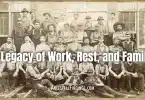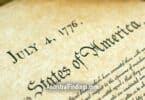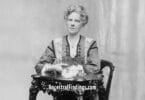History is a continuous rope of causes and effects. The birth of the United States is no different. Our Revolutionary War was the result of battles across the globe between the world’s major powers.
How were you a part? From the Philippines to Philadelphia, an ancestor of yours likely affected the formation of the United States.
War of the Austrian Succession
Human conflict began when two men wanted one thing. There is no beginning to this chain of events. For the sake of this story, though, let’s say it began with the War of the Austrian Succession.
Before his death in 1740, Charles VI was King of Hungary, Croatia and Bohemia, Archduke of Austria and Duke of Parma, as well as being the Holy Roman Emperor. His only son died at seven months of age. His titles, except for that of Holy Roman Emperor, fell to his eldest daughter, Maria Theresa.
The other powers of Europe would not accept a female with such power. Austria was allied with Great Britain and the Dutch Republic against France, Prussia and Spain. From 1740 to 1748, the two sides battled in Europe, North America and India.
In the end, Maria Theresa was accepted as successor to her father. The European map and traditional alliances were shuffled.
Finished But Not Over
The War of the Austrian Succession was expensive for all sides. The combatants needed to recharge and reload. The European powers ambitiously spread across the globe, hungry for more land and resources.
Spain, Great Britain and France were competing for dominance in North America, South America, the Philippines and India. The great navies of Britain and Spain battled on the sea while France kept its weight in Europe. France traditionally traded spoils in Europe for lost colonies abroad.
France had holdings in Canada and Louisiana. It aspired to connect them by taking control of the Ohio Valley. Spain held Florida and other parts of southern North America. Great Britain had its colonies on the Atlantic seaboard. It wished to expand into the west but needed to pass through the French territories to get there.
The French and Indian War
The North American conflict is remembered as the French and Indian War by the colonists because it involved Britain facing down the French and their Native American allies. Because of France’s large borders and relatively small navy, it preferred to keep most of its troops at home and utilize allies abroad. French trappers and explorers had assimilated with Native American society. They readily joined together against the threat of the British.
Great Britain, with its naval might, could bring greater manpower to the New World. France countered with tactics and local knowledge of geography, multiplying its force. The British relied on their colonists and promised them the right to expand westward when victory was achieved.
From 1756 to 1763, France and Great Britain battled over North America. All the European powers fought over trade, territory and treasure across the globe. At the conclusion, Prussia took control of neighboring territory and eventually became modern Germany. England won most of North America and India. Spain controlled New Orleans and parts of North America to the west. France was left with some of its Caribbean and African colonies.
Proclamation of 1763
With France defeated, the colonists were ready to pounce on the west. Yet King George did not think he could protect pioneers from the Native American population. He signed the Proclamation of 1763, prohibiting expansion west of the Appalachian Mountains.
Westward expansion was firmly in the minds of every colonist fighting the French in the Ohio Valley. Keeping the colonists from that land was seen as betrayal.
The British Crown spent vast amounts of money and resources to win the war. It had new territory to develop and defend. It needed money.
New Taxes and Pressures
The British saw its colonies as a cow to be milked.
Great Britain passed the Sugar Act in 1764, increasing the duties paid on sugar and other goods. Importation of non-British liquor was prohibited, forming a monopoly for the Crown.
The customs system was reorganized to squeeze every penny from the colonies.
The Currency Act of 1764 stopped colonists from printing their own money.
The Stamp Act of 1765 required all printed goods, from playing cards to pamphlets, to carry an official seal that had to be bought. It directly paid for the British troops occupying the colonies. The Quartering Act was passed at the same time, forcing colonists to house soldiers.
Rebellion
The colonists had enough. They spoke out against taxation without representation. They boycotted British goods. Leaders spread pamphlets and rallied crowds. They intimidated British tax agents until the agents quit.
The First Continental Congress met in Philadelphia in 1774. The wheels of revolution began turning.
How was your family involved?
- Loyalists in the American Revolution (Free Lookups)
- Maryland and Delaware Revolutionary Patriots, 1775-1783 (Free Lookups)
- New York Revolutionary War Records, 1775-1840 (Free Lookups)
- Military Record Lookups
- The Story of the First Continental Congress (Kindle Edition)
- The War of the Austrian Succession
- Crucible of War: The Seven Years’ War and the Fate of Empire in British North America, 1754-1766
- American Revolution: The Proclamation of 1763 – Classroom Poster







